Table of Contents
Medicine in the Nasrid period in Granada
Medicine in the Nasrid period in Granada was one of the great contributions of Al-Andalus to the world.
The Nasrid period, which lasted from the second half of the 13th century until the conquest of the city by the Catholic Monarchs in 1492, was a period of great cultural and artistic flourishing in which the arts, architecture, literature and science flourished.
Medicine, as part of human knowledge, also advanced notably during this period and had a significant impact on Western medicine, especially throughout the Middle Ages.
Its study was not only based on curing diseases, but was also a tool for research and development of a deeper knowledge of the human body and its ailments.
Such was its relevance that several Andalusian medical texts were translated into Latin and served as the basis for the teaching of medicine in Europe.
Nasrid medicine left a lasting footprint in the history of medicine and continues to be relevant today throughout most parts of the world.
For instance, Ibn al-Katib, physician, veterinarian, poet, historian, theologian, jurist and politician who was Vizier of Granada, was a pioneer in contagion theory.
During the 14th century, the Black Death ravaged Europe and the Muslim world.
Ibn al-Jatib’s importance as a physician and epidemiologist, sultan`s advisor and political leader was decisive.
He was the first to the first to recognize plague’s contagious nature and his proposal of quarantine was crucial in stopping the spread of the disease.
It lasted 40 days and applied to the entire population, without exception, and Granada was enclosed in total confinement.
These measures were so effective that they not only saved numerous lives but also allowed Granada to recover before other cities affected by the plague.
His legacy continues to be recognized as an example of effective action in health crises.
Medicine in the Nazari period, a melting pot of wisdom for health care
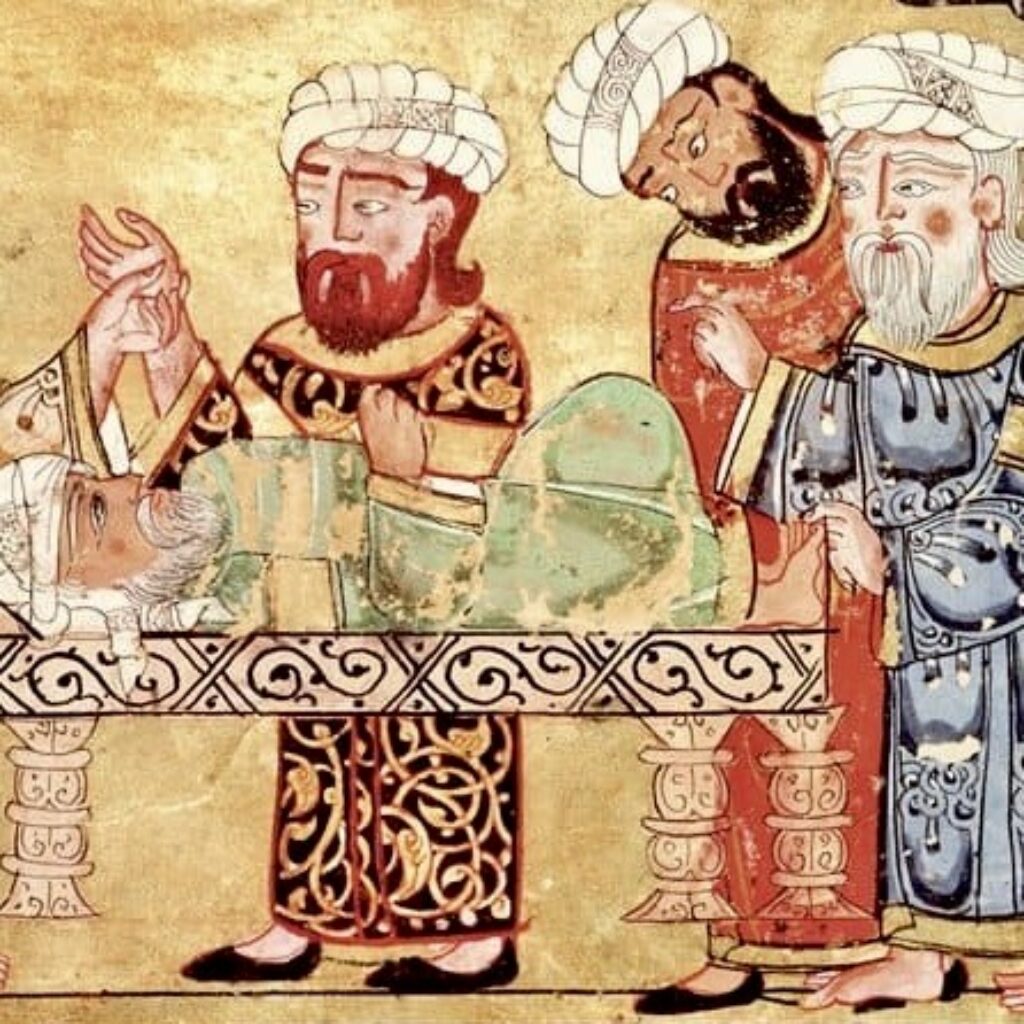
The medicine of the Nasrid period in Granada was based on a combination of knowledge.
It was also a time of cultural exchange, as scholars and physicians from different regions and cultures converged in Al-Andalus.
This led to a melting pot of knowledge and wisdom in medicine, with influences from the Greek, Roman, Persian, Jewish and Arabic medical traditions.
Medicine in the Nasrid period was an important field of study, in which both scientific and popular knowledge played an important role.
Characterized by a strong focus on observation, experimentation and the use of natural medicines.
And, also, by a strong desire to learn from other sources and cultures.
The result was an active exchange of ideas and practices from different cultures and faiths.
Alongside scientific medicine, folk knowledge and folk remedies were also prevalent in the Nasrid period.
Healers used medicinal herbs, amulets and prayers to treat various ailments.
Some of these practices were based on Islamic teachings, while others were influenced by pre-Islamic beliefs and traditions.
Practices such as cleaning teeth, which Muhammad had included in the Koran, were grouped together in the Tibb-Al-Nabi, Medicine of the Prophet.
Thus, Arab medicine was understood holistically, unlike Hippocratic medicine, where the health of the body was separated from that of the spirit.
In medieval Granada, the distribution and accessibility of medicine had a significant impact on society.
As a result, the Madrasa and the Maristán must be mentioned when discussing medicine in Al Andalus, as they were crucial to the discipline’s development.
Medicine in the Nasrid period in Granada: the Madraza
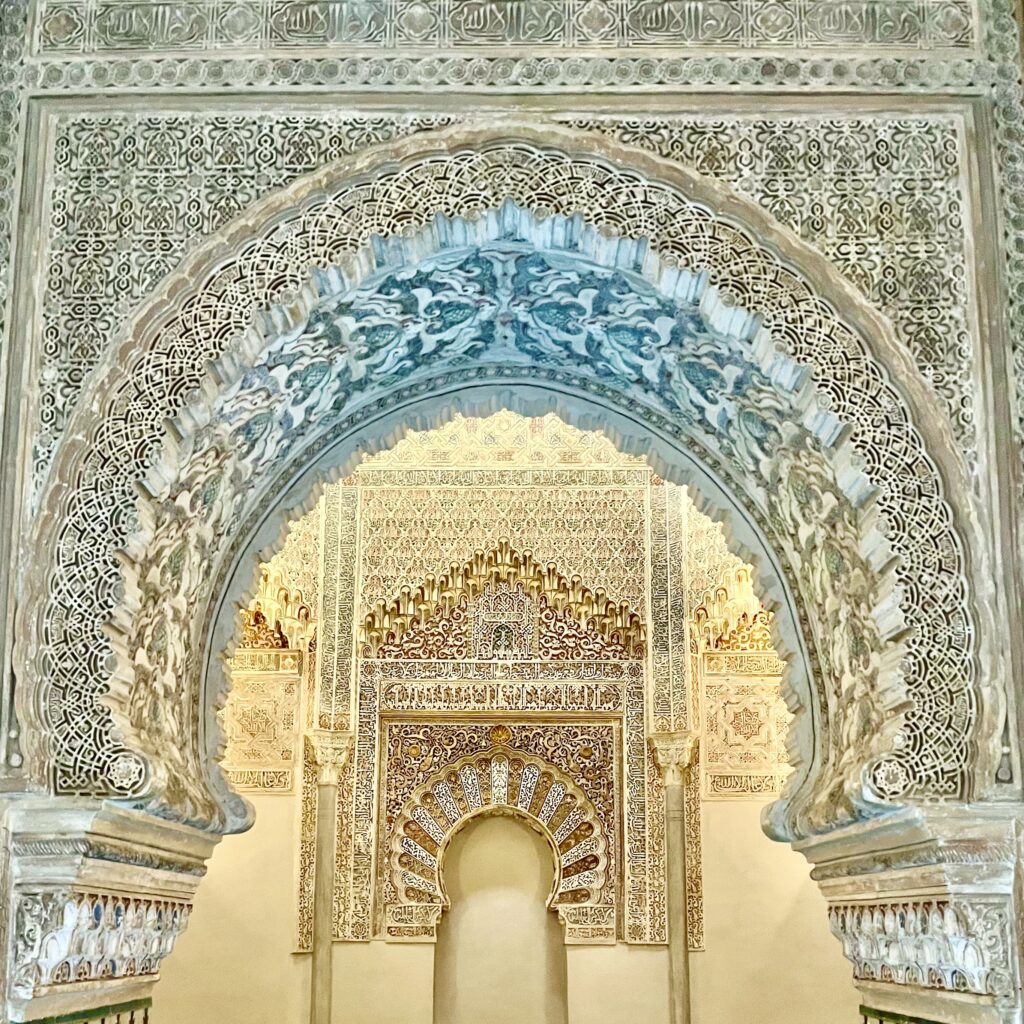
Sultan Yusuf founded the Madraza, also known as the Universidad de Granada, in the 14th century, and it swiftly became one of the most prominent centres of medical instruction in the Muslim world.
Everyone was educated in the arts and sciences, including medicine, which was seen as a critical branch of knowledge for society.
The study of medicine focuses on observing and describing symptoms and diseases, developing diagnoses and prescribing treatments.
In Madraza, medical students learned not only the technical skills required to treat patients, but also medical ethics and social responsibility.
Physicians were regarded as public health guardians, treated all patients, regardless of socioeconomic class or religion.
Medicine in Nasrid period was also highly valued among the court, with physicians enjoying royal patronage.
Sultan Muhammad V, for example, founded a medical library in the Alhambra palace, housing more than a thousand books: . numerous medical treatises and manuscripts of the time.
Trained in a variety of knowledge, including anatomy, pharmacology, astrology and philosophy, were specialists in diseases of the eyes, ears, skin, stomach, etc.
They even developed advanced surgical techniques, including anesthesia and suturing.
Patients requiring surgery were sedated with opium or wine and bandages and sutures were applied to aid in healing.
Al Andalus physicians were among the first to study human anatomy in detail.
They practiced dissections and created detailed diagrams of the human body, which were used as reference by European anatomists for centuries.
Just to mention a few remarkable Arabian physicians; Rhamzés, Avicenna, Averroes, Abulcasis.
As well as new clinical research, especially in infectious and ocular diseases, and the expansion of the pharmacopoeia.
Nevertheless, the most outstanding progress made by Arab medicine was hospital´s contructions.
Medicine in the Nasrid Period in Granada: The Maristán
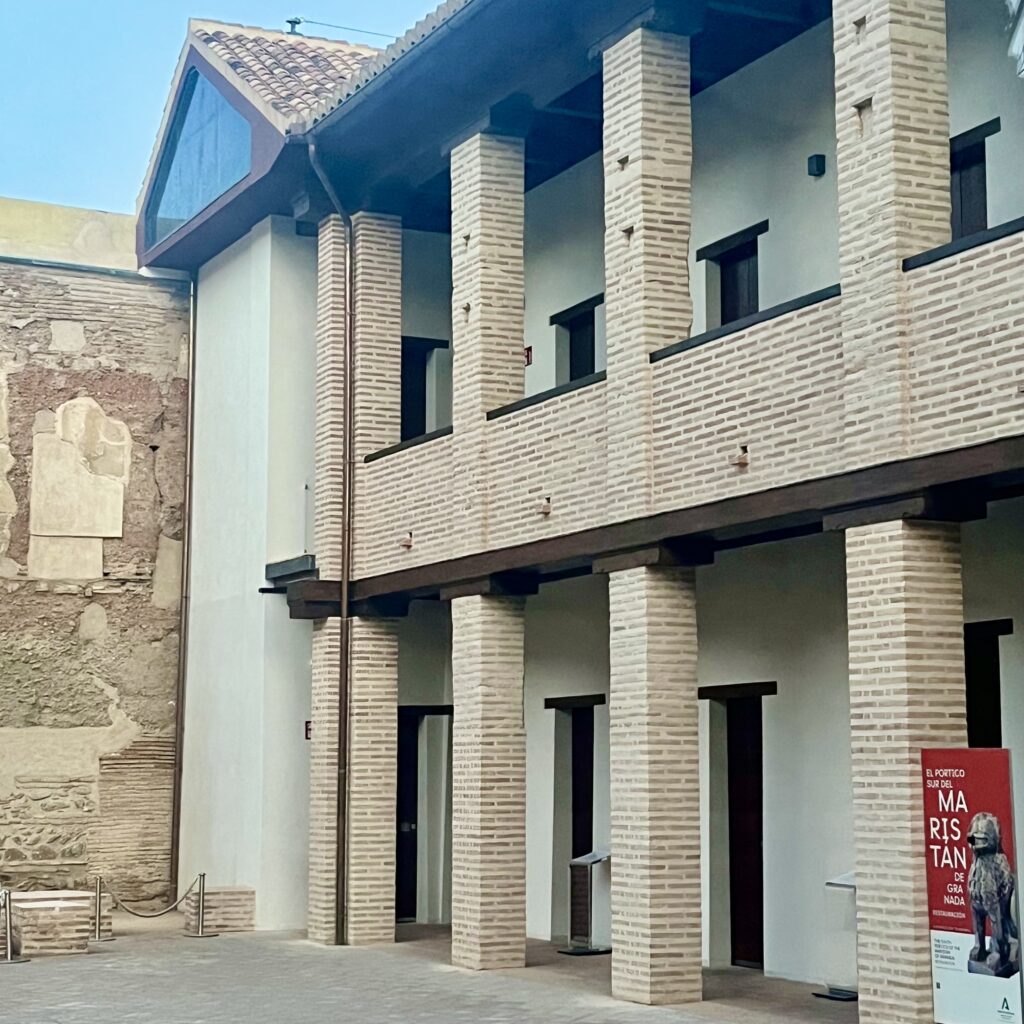
The Maristán , from the Arab Bimar “sick”, and Istan, “place for”.
Was another important medical center in Nasrid Granada.
Founded in the 15th century by Sultan Muhammad V, it became one of the largest and most prestigious hospitals of its time.
This Hospital used to provide medical care to the underprivileged and needy members of the community in the major towns and cities.
Patients who came to the Maristan were treated free of charge and were guaranteed confidentiality of their illness.
They kept a detailed record of each patient and their symptoms, also the food and medicines given, were thus able to research diseases and their treatments.
Medicine in the Nasrid period was not only practiced by men, some women from Granada excelled in the cultivation of medical science.
In social terms, a woman could not be seen without her jimar or have any contact with any man but her husband.
Even when had to be attended by a doctor, it was done obligatorily through a curtain.
Therefore, women midwives proliferated.
Despite not having the same training in medicine, midwives used to inspect the female patients and then describe what she saw to the doctor.
Hospitals had different wards for the sick, according to their diseases and medical specialties, and also sex.
Doctors visited patients and prescribed their medicines in the morning.
During the afternoon, another round of visits was made and followed by masteclasses.
They even treated mental illnesses with dietary treatments, music therapy, dance, theater, baths and work.
In the late 15th century, The Maristán became an asylum.
Although many centuries have passed since the Nasrid period in Granada, medicine in Al Andalus remains a very relevant discipline today.
Medicine in Al-Andalus and its influence on modern times
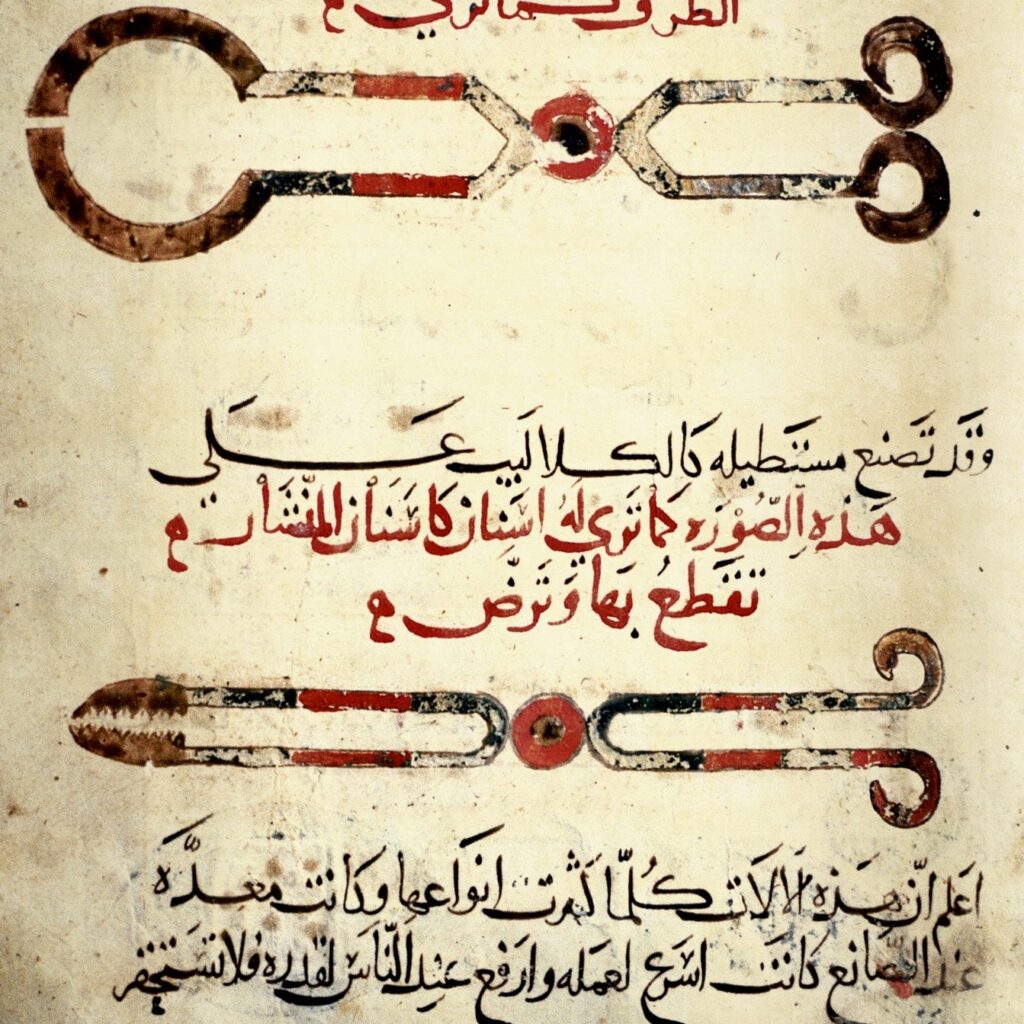
The hands used to create and work have more value than machines. And manual or artisanal work does not detract from the value of the human being.
Medicine in the Nasrid Period had a major impact on modern medicine, and its legacy continues to influence medical practice and research throughout the world.
For example, many medical terms that are in use today, such as “alcohol” and “alkali,” were introduced by Muslim scholars in Al-Andalus.
They developed new sanitation practices, such as regular hand-washing and the use of quarantine to prevent the spread of infectious diseases.
Many of the advances and discoveries made at that time have been the basis for the development of modern medicine.
Including surgical instruments and techniques that are still used today, such as the forceps, the scalpel, and the surgical needle.
Their work laid the foundation for many of the medical advances that we take for granted today.
And their contribution to medicine is further evidence of the importance of knowledge sharing and collaboration between cultures.
Contact me, and let us discover together the fascinating medical advances and practices that were developed during the Nasrid period in Granada.
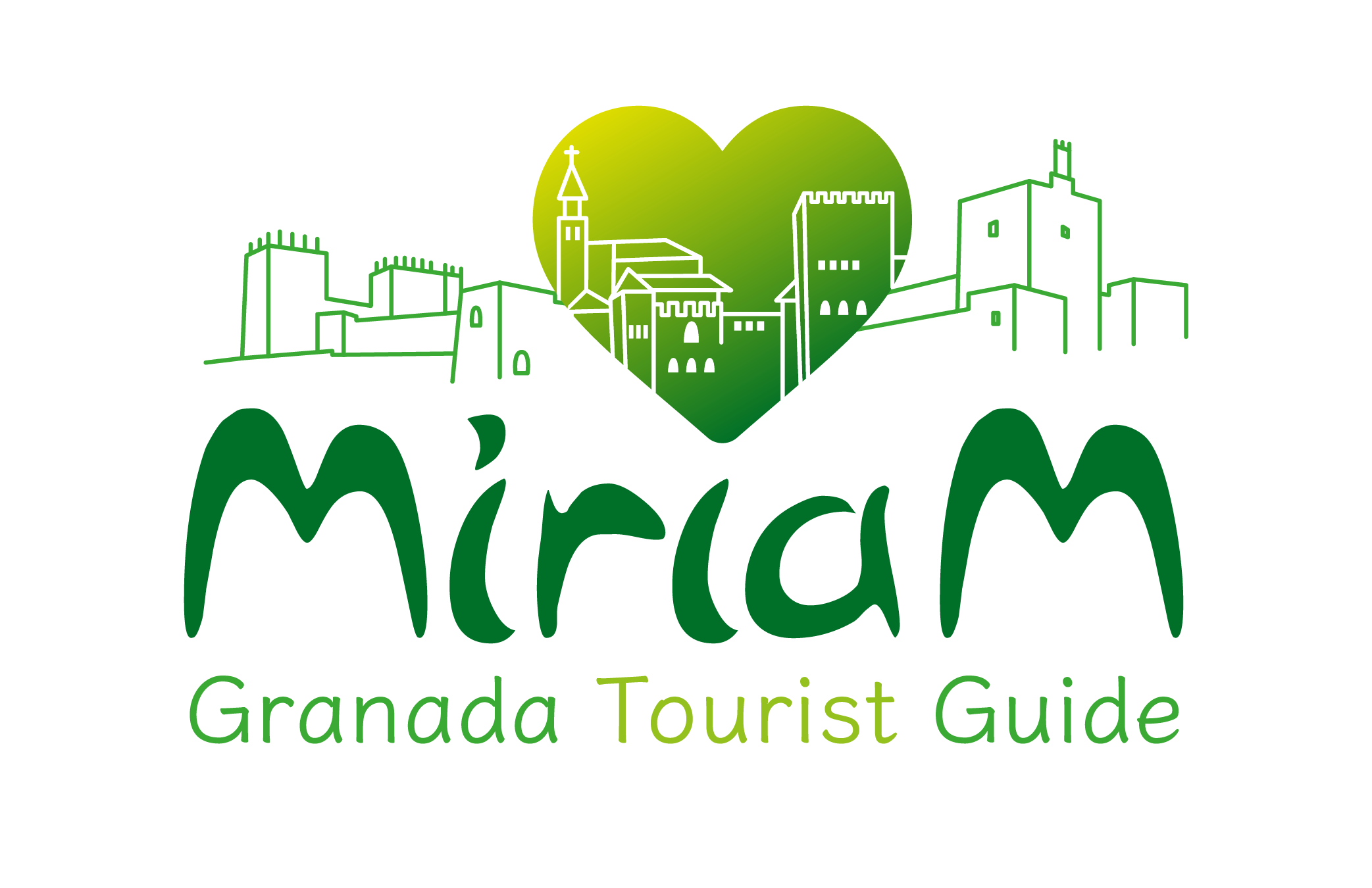

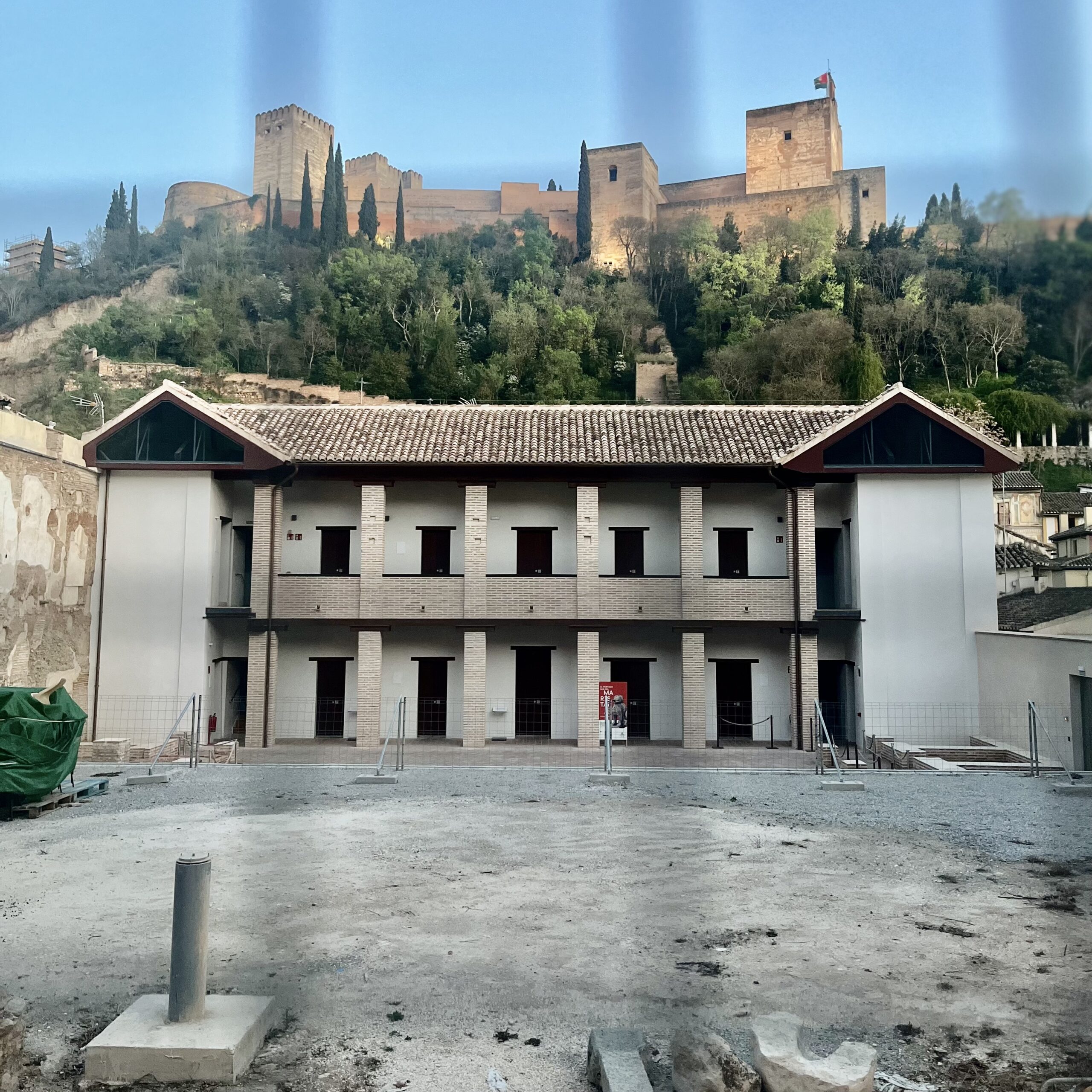

Comment (0)